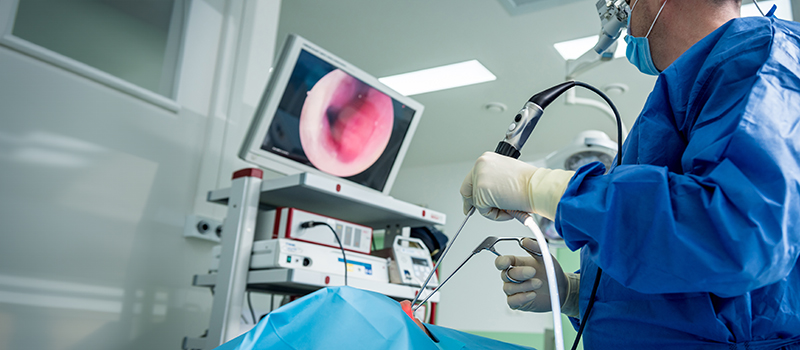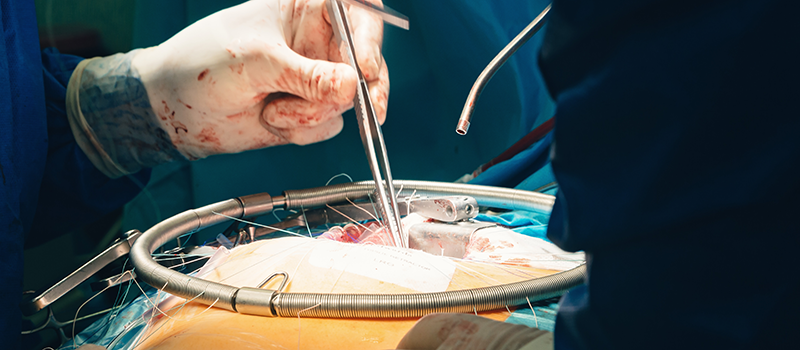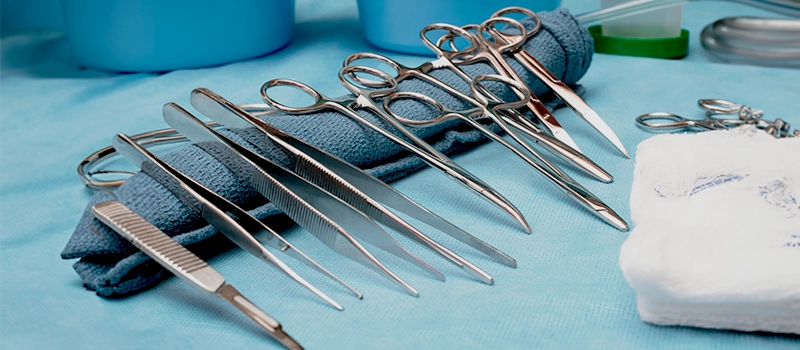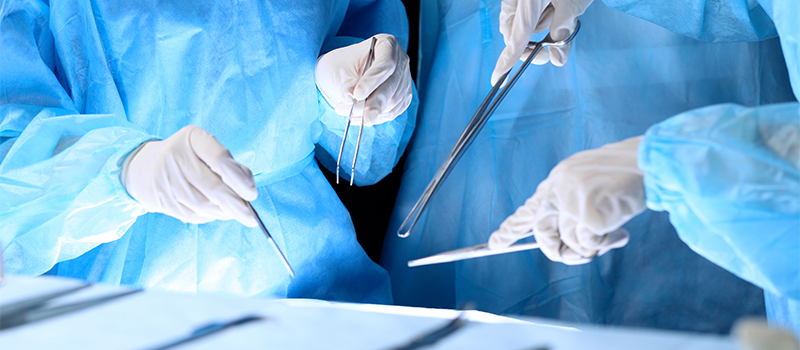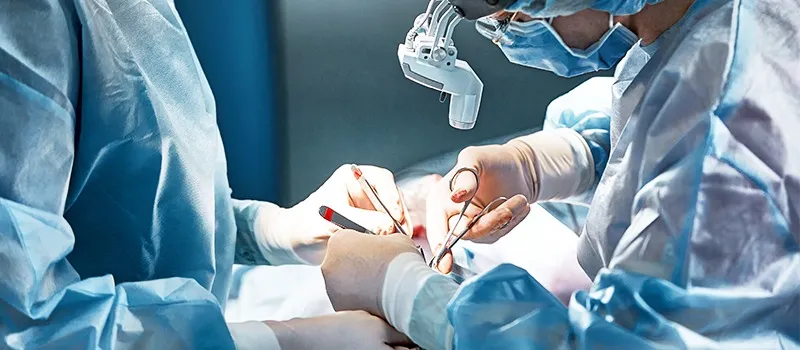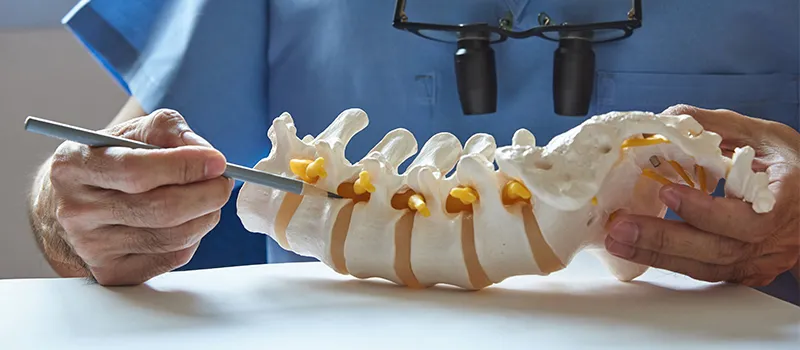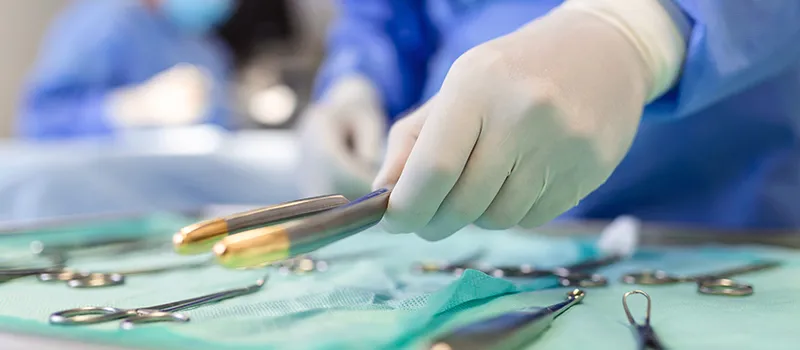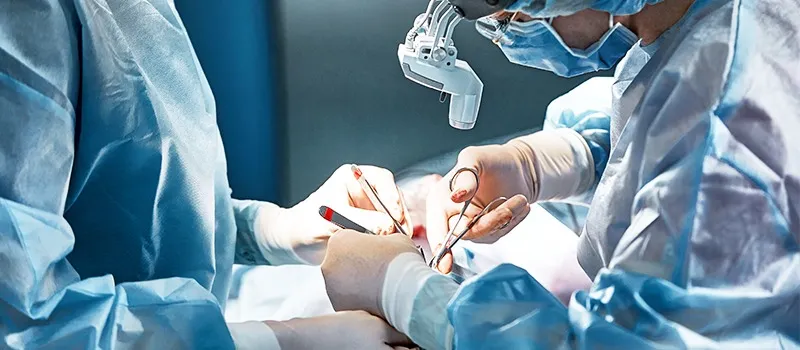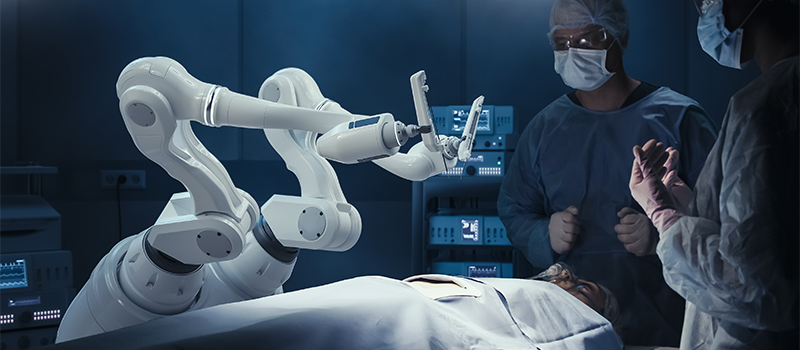
Robotic Surgery: How Robots Can Help Doctors in Surgery
Doctors using the robotic systems find that it can provide increased precision, flexibility, and control during the operation. They can also offer enhanced visualization through high-definition cameras during operations. Additionally, robot systems can enable minimally invasive techniques, which lead to quicker recovery times for patients.
Overview of Robotic Surgery
Robotic surgery is carried out with a da Vinci surgical system which comprises specialized robotic instruments – arms, a camera, a robotic console, and a magnified screen, it was approved by the United States Food and Drug Administration in 2000.
In 2014 latest da Vinci Xi robotic system was released with four upgraded arms, in these robotic systems arms and consoles are common equipment. During surgical procedures, the surgical system carries surgical instruments with one arm, and the other arm is equipped with a camera. The surgical console provides surgeons with a high-quality 3D view of the surgical site.
Robotic surgery has broad impacts across various medical specialties, spanning from general surgery to specialties such as urology, gynecology, and cardiac surgery showing the versatility of robotic systems has surpassed traditional surgery boundaries.
Robotic surgery allows surgeons to enhance their skills and capabilities during complex procedures. This specialized surgical technology enables enhanced magnification and precise movements to perform procedures with small incisions.
Evolution of Robotic Surgery
The first surgical robot Puma 560 was introduced in 1985, to perform selective brain neurosurgical biopsies. These surgical robots and other surgical cutting devices are digitally programmed and designed to outperform hand biopsies with precision and accuracy. It provides a higher level of accuracy in surgical procedures compared to conventional technique surgical methods. As a result, robotic surgery shifts the surgical ideology with the recognition that the surgical system can provide a minimally invasive approach for patient outcomes and faster recovery times.
Robotic Surgery v/s Traditional Surgery
Traditional surgery and robotic surgery both have their pros and cons, based on various factors such as the surgeon’s expertise, the patient’s condition, or the need for any specific surgical procedure.
Traditional surgery or laparoscopic surgery has certain limitations which include two-dimensional imaging, and a limited range of motion with instruments whereas robotic surgery systems are introduced with enhanced visualization and increased precision with significant advancements in robotic-assisted procedures.
Robotic systems offer minimally invasive surgery, resulting in less blood loss, smaller incisions, and faster recovery times whereas traditional surgery depends upon the surgeon’s manipulation skills with instruments and experience. Traditional surgery offers a wide range of surgical procedures, especially in cases where robotic systems may not be available.
What are the Different Types of Robotic Surgery?
- Robotic Gynecologic Surgery – One of the most common robotic-assisted surgery is hysterectomy which is a surgical removal of the uterus. Robotic surgery revolutionized the field of gynecology providing potential benefits to both surgeons and patients. For women, robotic gynecologic surgery is a good alternative compared to laparoscopic procedures surgery or traditional surgery. Robotic-assisted surgery allows precise small incisions and improved visualization of the surgical site, which results in reduced blood loss or risk of infection, faster recovery, shorter hospital stays, less need for blood transfusion, and quickly return to normal activities. Robotic technology allows surgeons to perform complex procedures such as myomectomy (precise removal of uterine fibroid) and sacrocolpopexy (replacing pelvic organ prolapse), with good accuracy and efficiency.
- Robotic Prostate Surgery- According to some studies which indicate that radical prostatectomy, the removal of the prostate and surrounding cancerous tissues is the most effective surgical treatment. Surgeons generally use three approaches that are laparoscopic surgery, open surgery, or robotic-assisted surgery. The surgeon’s goal is to remove the prostate gland without any damage to the nerves and blood vessels of the surgical site. Robot-assisted surgery is the most effective treatment with minimally invasive surgery or smaller incisions resulting in faster recovery and fewer post-operative risk of complications.
- Orthopaedic Robotic Surgery- In orthopaedic robotic surgery use of a Mako-robotic arm assisted in total knee and partial knee replacement as well as hip replacements is employed. In this joint replacement surgery, surgeons remove the damaged cartilage and bone with prosthetic components which are constructed with high-quality plastics and polymers along with metal alloys.
- Otolaryngologic Robotic Surgery– In head and neck surgery where the surgeon requires, significant dissection or large incision in traditional surgery which leads to impaired functionality, collateral tissue damage, and reduced risk in quality of life. FDA-approved da Vinci robotic system for head and neck surgery. In the realm of thyroid surgery, robotic techniques were first introduced in a 2005 case of hemithyroidectomy. This method involves a transaxially robotic approach and electrocautery-assisted tunneling, leading to the robotic dissection in the non-vascularized area near the sternocleidomastoid muscle.
There are other clinical specialties in robotic surgery which include gynecological surgery, thoracic surgery, cardiac surgery, coronary artery bypass grafting surgery, mitral valve repair or surgery, urology surgery, gallbladder removal surgery, colon surgery where robotic assistance has significantly impacted its invasive approaches for shorter recovery times and patient care.
Advantages and Disadvantages of Robotic Surgery
Surgical system includes a digital camera with improved dexterity which results in minimally invasive procedures whereas robotic surgery can be more expensive than traditional surgery due to the cost-effectiveness of maintaining robotic systems.
The robotic system provides precision and accuracy which lead to improved surgical outcomes and reduced risk of complications, but surgeons must undergo specialized training programs to become proficient with robotics which prolongs the learning curve for surgeons.
These robotic systems allow surgeons to perform surgical approaches remotely, providing access to expertise in remote areas and enabling telemedicine applications but limited access to robotic surgery procedures or not available in all healthcare facilities in rural areas is a big disadvantage for patients who could benefit from this advancement.
How can robots help doctors in improving surgical outcomes? Will robots replace surgeons?
- Robotic systems give surgeons enhanced precision and dexterity, allowing them to spare nerves critical for urinary continence and sexual function. Smaller incisions and improved visualization contribute to reduced postoperative complications or pain and shorter hospital stays with quicker recovery times. Robotic surgery lies in unparalleled precision and accuracy. It intricates a capable range of motion with arms that maneuver like a human hand, which helps in delicate or even tight spaces of the surgical site. For these surgical site’s definition, 3D visualization imaging gives surgeons a detailed visualization during surgeries.
- During extended surgeries, the ergonomic layout of the console can enhance surgeon comfort, it is a setup that provides eye-hand coordination during surgery, reducing surgeon fatigue, and strain on the surgeon, and enhanced precision. It intricates surgical procedures effortlessly, which leads to enhanced patient safety and surgical outcomes.
- Robotic surgery technology is the emergence of remote surgery capabilities, by incorporating teleoperation functionalities and high-speed internet connectivity surgeons are enabled to conduct procedures from distant locations, expanding the reach of specialized surgical services and overcoming geographical limitations. These advanced surgical robotics technologies collaborate with global experts to facilitate the transfer of skills and exchange of knowledge within the surgical community.
- Augmented reality-enhanced visualization technology in robotic surgery is revolutionizing surgical planning and execution. This AR visualization surgical technique shows digital images to surgeons throughout the medical procedure, offering live guidance and visualization. These digital images help surgeons to see critical structures such as tumors or blood vessels in 3D dimensions which improves surgical precision and awareness. AR also helps surgeons to guide or customize surgical strategies using preoperative imaging data which refine the surgical process and reduce the risk of complication. By merging this virtual operative field and physical reality, AR visualization technology is enhancing surgical education for surgical procedures and helps in patient safety.
Will Artificial Intelligence and Robotic Surgery Replace Doctors?
Robots will enhance the work of surgeons, not replace it. Surgical robots are controlled by skilled doctors or surgeons, they are not working independently but helping surgeons to operate more effectively. da Vinci surgical system from Intuitive Surgical one of the best robots in the market for almost 20 years.
The outcome of AI and surgeons can be most potent. Here are some important key features of Artificial Intelligence in robotic surgery role in the pre-operative phase, Intra-operative phase, and post-operative phase. With machine learning and deep learning techniques, surgeons can predict surgical risks. A study by Frost & Sullivan has mentioned that AI will address the inefficiencies and clinical challenges faced by surgeons in traditional techniques.
- In the pre-operative phase AI with robotic assistance provides precise prediction, automation, and expanding surgery planning with robotic procedures. The surgeons create a pre-operative plan based on the patient’s medical history and imaging examinations for successful surgery. In this phase, general image examination techniques and traditional machine learning, augmented by deep learning are used. These techniques help in the classification of anatomical structures, segmentation, detection, and image registration, in common imaging techniques include CT-scan, X-ray, ultrasound, PET, and MRI.
- In the intraoperative phase of surgery, AI works in different segments such as 3D shape instantiation endoscopic navigation, visual odometry, 3D reconstruction & camera localization, and depth estimation at the surgical site.
- The final stage or post-operative phase represents the patient’s vulnerability, fatigue, discomfort, and experiencing pain, during this period surgeons closely monitor for any potential complications after surgery. With AI-integrated EHRs, electronic /health records surgeons can detect accurate surgical site infections and suppress the limitations of clinical outcomes observation alone with advanced surgical care.
What are the training and skills development Components needed for Robotic Surgery?
- Required skills and training for surgeons to perform robotic surgery.
Surgeons need to possess a specific set of skills with comprehensive specialized training to ensure safety and proficiency. There are some key skills requirements for surgeons to perform robotic surgeries:- Surgeons need to understand robotic systems such as da Vinci’s robotic system, which includes components and functionalities like robotic arms, camera systems, consoles, and tools.
- Surgeons need to develop precise hand-eye coordination to manipulate the robotic arms and instruments accurately based on the 3D visual feedback provided by the robotic system.
- Surgeons need to be skilled with the manipulation of robotic instruments which includes tasks such as cutting, grasping, suturing, and dissecting tissues with precision.
- In robot-assisted surgery, surgeons must develop a skill of spatial awareness to navigate close anatomical spaces effectively inside the body and perform complex surgery without causing any damage to surrounding anatomical structures.
- Hands-on simulation extensive training is important for surgeons to gain knowledge about robotic surgery systems and surgical practice with different surgical tasks in a controlled environment, it builds confidence and proficiency before operating on the actual patient.
How to Become a Robotic Surgeon?
- Medical education and residency programs incorporated robotic surgery training. Here are some different types of Robotic Surgery Specialties:
- ExcelsiusGPS Robotic Navigation Platform: This robotic system enables minimally invasive techniques for spinal surgery through the integration of a rigid robotic arm with comprehensive navigation features. It is used for precise, image-guided plans, the robotic arm of ExcelsiusGPS precisely identifies the targeted region of the spine during the surgery, similar to following the predetermined route on GPS. Experienced surgeons used this pathway to direct the robotic arm for precise screw placement, maintaining full control over the surgical robot.
- da Vinci Surgical System: This surgical system enables surgeons to perform minimally invasive procedures such as joint replacement. It provides dexterity and visualization with the use of a surgeon console to control robotic arms and manipulate surgical instruments during surgery.
- Mako Robotic-Arm Assisted Technology: This surgical system is primarily used for orthopaedic surgical procedures to assist precise d execution of joint replacement with the combination of 3D imaging and robotic arms for enhanced accuracy and implant placement.
Here are some academic courses in healthcare institutions for minimally invasive surgery in India:
- All India Institute of Medical Sciences in New Delhi and Rishikesh provides MCh minimally invasive surgery 3-year full course involving robotic surgery programs and laparoscopic surgery training.
- FNB conducts minimally invasive surgery training programs through the National Board of Examinations including robotic technology and laparoscopic surgery training.
- The AIntuitive Robotic Onboard Program and Education is a collaborative effort between Intuitive India with AIIMS, to introduce surgeons to robotic-assisted surgery, resident surgeons need to be familiar with the technology, clinical applications, and numerous benefits of robotic surgery.
Other privately funded centers provide training facilities for robotic surgery programs which came under the Vattikuti Foundation.
In conclusion, healthcare professionals and students may learn skills from online surgery video lectures about robotic systems or robot-assisted surgery with the emerging trends in surgery in the healthcare system. For strong learning or to gain an understanding of surgical robots and their advancements in the surgical field one of the most popular surgery courses for MS students is Surgery MS by Dr.Nilay Mandal.
Conclusion
Robotic surgery represents a groundbreaking innovation in the field of medicine, allowing surgeons to perform precise and minimally invasive procedures using robotic systems. Key advantages include improved precision, flexibility, minimized incisions, and reduced recovery time. For students interested in surgical technology and minimally invasive techniques, DigiNEET offers content covering the principles of robotic surgery, its benefits, and the types of surgeries in which robotics are employed. DigiOne reinforces the importance of Anatomy and Physiology in understanding how robotic surgery is applied to various body systems. By providing detailed case studies, video lectures, and quizzes, these platforms help students gain a comprehensive understanding of robotic surgery and its potential in modern clinical practice.
Frequently Asked Questions FAQs:
Q1. How long are the robotic surgery fellowship training programs in surgical subspecialties?
Ans. It is a one-year program preparing fellows for a career in robotic urologic surgery, laparoscopic surgery, and urology/urology oncology.
Q2. What is the fellowship in minimally invasive surgery or robotic surgery programs?
Ans. A fellowship program includes a year post-MD/MS program which will provide clinical training, academic, and research in minimally invasive surgery.
Q3. Which is the better surgery option robotic and laparoscopic?
Ans. Robotic surgery provides surgeons clear and precise view and better dexterity, it also results in less pain and fewer complication rates with quicker recovery for patients.
Related post
